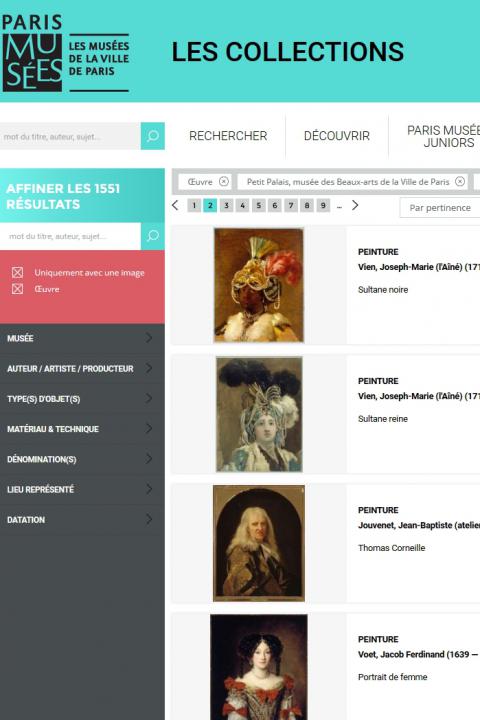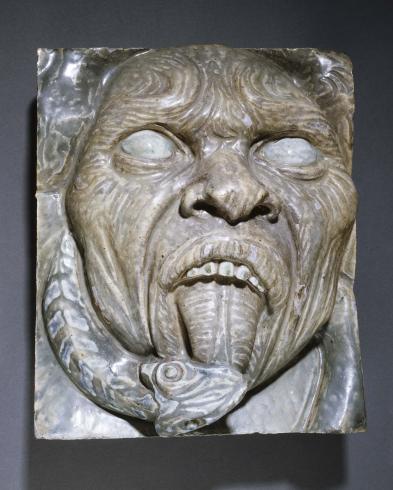In March 1890, two years after installing his kilns at Saint-Amand-en-Puisaye in the Nièvre département, Carriès received the commission he had always dreamed of: an enormous door surrounded in stoneware tiles dividing the studio of the fabulously wealthy American Winaretta Singer, future Princess Edmond de Polignac. She agreed to this plan for a monumental door on the basis of a drawing by Eugène Grasset, a friend of the sculptor.
The door was to be decorated with animals in the medieval style, but Carriès let his imagination transform the project and it was swiftly invaded by the strange beings which featured in his nightmares.It was a huge task and the self-taught potter learnt on the job. He hired workers who carried out experiments with different clays, glazes and firings.
When he died in 1894, he had finished the full-size plaster model of the Door, but had not been able to complete all the stoneware tiles. Scarcely one third of the 600 irregularly shaped tiles envisaged exist in stoneware.
This tile was to occupy a very specific position as the only figurative element positioned on the rear of the Door to watch visitors entering Winaretta Singer’s studio. Its terrifying appearance is emphasised by skilful glazing, with the opaque eyes contrasting with the transparent glaze of the face: it is truly the Guardian of the sanctuary.
A. S.

City of Paris municipal collection's website
The collections portal can be used to search the collections of Paris’s 14 municipal museums (approximately 336,000 works, including 43,000 belonging to the Petit Palais).
It is also possible to download around 12,000 images of the museum’s works free of charge.
Access the Museums of the City of Paris collections portal
Extern databases
Discover a selection of databases online presenting works from the Petit Palais or documents concerning the history of the museum.

